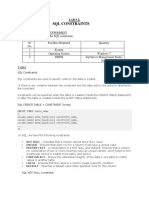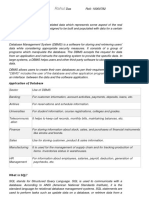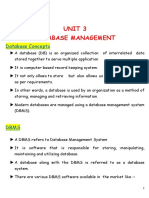0% found this document useful (0 votes)
140 views8 pagesKey Constraints in DBMS
The document outlines key constraints in a Database Management System (DBMS), which are rules that govern data entry in database tables. It details five types of key constraints: NOT NULL, UNIQUE, DEFAULT, CHECK, PRIMARY KEY, and FOREIGN KEY, each serving specific purposes for data integrity and validation. Examples are provided for each constraint to illustrate their application in SQL table creation.
Uploaded by
M. Madhusudhan MCopyright
© © All Rights Reserved
We take content rights seriously. If you suspect this is your content, claim it here.
Available Formats
Download as DOCX, PDF, TXT or read online on Scribd
0% found this document useful (0 votes)
140 views8 pagesKey Constraints in DBMS
The document outlines key constraints in a Database Management System (DBMS), which are rules that govern data entry in database tables. It details five types of key constraints: NOT NULL, UNIQUE, DEFAULT, CHECK, PRIMARY KEY, and FOREIGN KEY, each serving specific purposes for data integrity and validation. Examples are provided for each constraint to illustrate their application in SQL table creation.
Uploaded by
M. Madhusudhan MCopyright
© © All Rights Reserved
We take content rights seriously. If you suspect this is your content, claim it here.
Available Formats
Download as DOCX, PDF, TXT or read online on Scribd
/ 8






























































































